
See the October 17th Webinar Summary
Here


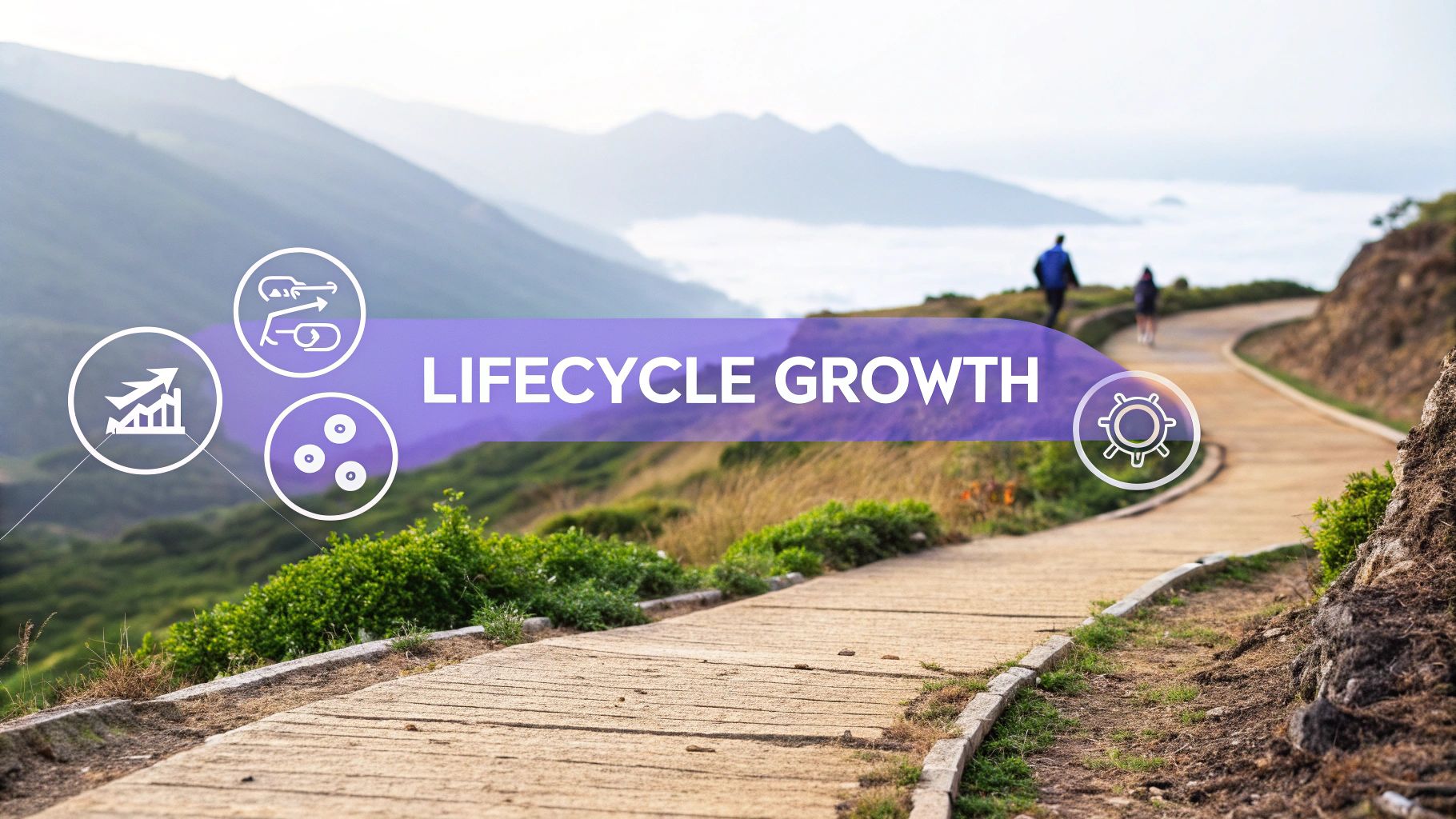
The customer lifecycle phases map out the entire path someone takes with your brand. Think of it less as a single sale and more as building a lasting, profitable relationship, from the very first "hello" to them becoming a die-hard fan.
If you want sustainable growth, you have to stop thinking about customers in terms of one-time transactions. The real magic happens when you see their journey as a long-term relationship. Every interaction is a chance to guide someone from being a total stranger to an interested prospect, then a first-time buyer, and ultimately, a loyal advocate. This evolution is the heart of the customer lifecycle.
At its core, the customer lifecycle is a proven marketing model that breaks this journey into distinct stages. By understanding where a customer is in their journey, you can deliver the right message at exactly the right time, making them feel seen and understood. For a deeper dive into how this framework boosts performance, check out this great resource on Omnisend's blog.
This visual really captures the progression from that first point of contact to a lasting partnership.
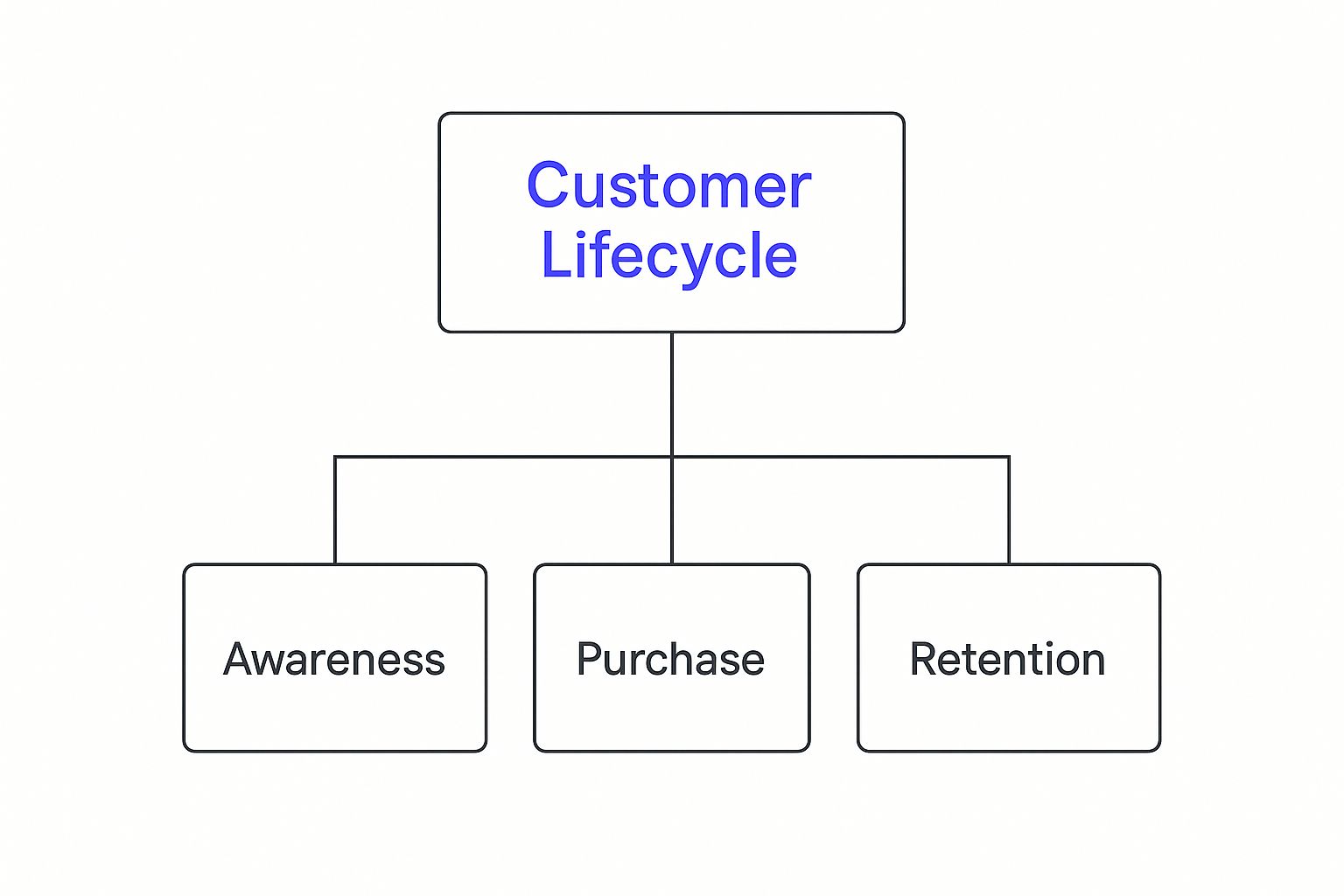
As you can see, it's not a single event. It’s a series of stages, and each one demands its own unique strategy.
For years, marketers talked about a linear "funnel" where you'd pour leads in the top and hope some customers trickled out the bottom. But that thinking is outdated. Today, the smartest brands view this process as a dynamic cycle.
Why does this change in perspective matter so much? Because a happy customer doesn't just vanish after buying something. They become the engine for the next cycle.
A loyal customer becomes your most powerful marketing channel. They refer new prospects, provide valuable feedback, and make repeat purchases, effectively restarting the lifecycle for others and generating incredible ROI.
When you truly master these phases, you get a clear roadmap to:
You're not just plugging leaks in a funnel; you're building a self-sustaining growth engine. This guide will walk you through actionable strategies for each phase, showing you how to nurture those relationships every step of the way.
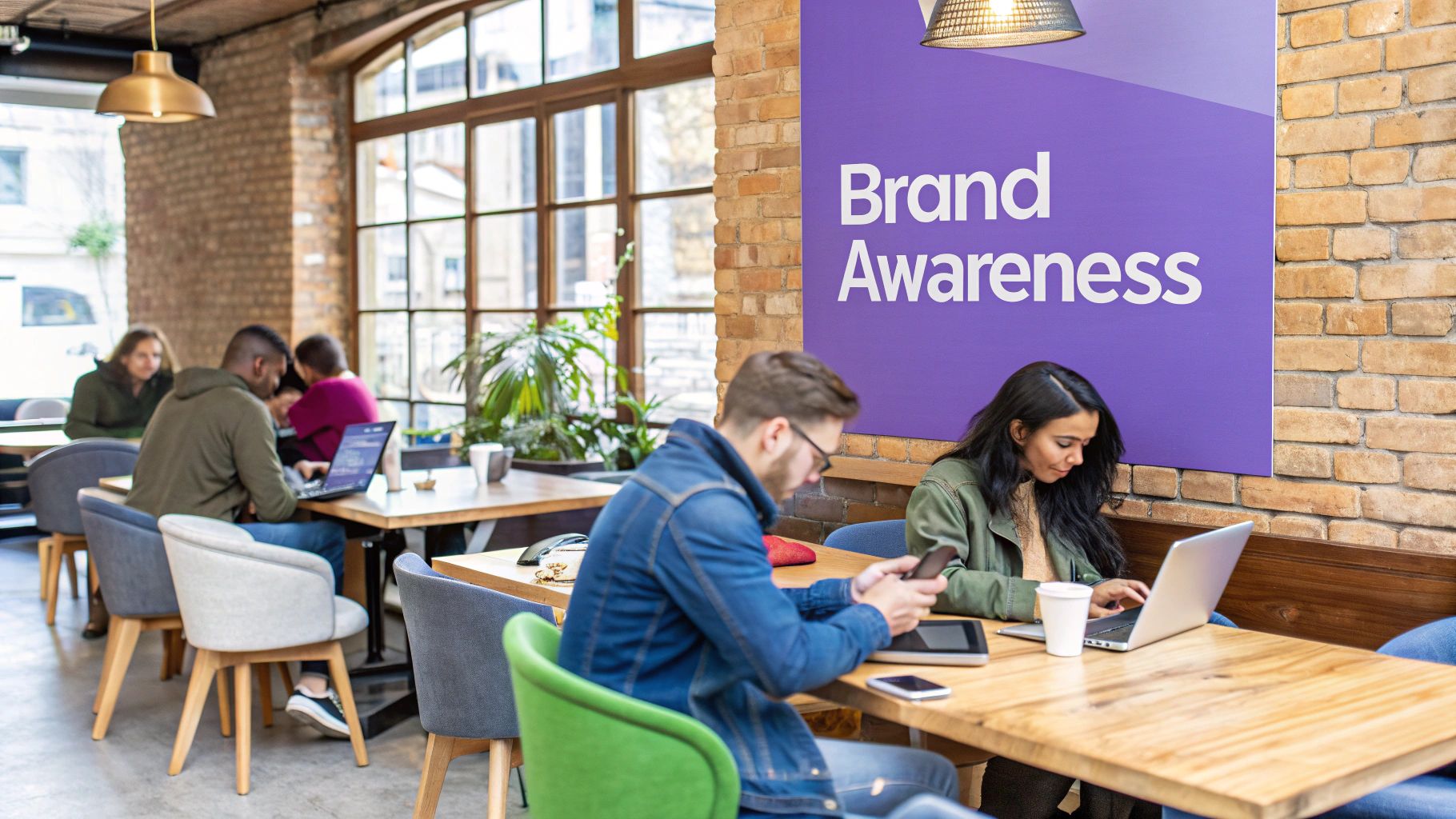
The customer relationship doesn't just start when someone clicks "buy." It actually begins much earlier, with a tiny spark of recognition—that first moment a total stranger learns your brand exists. This initial journey, which covers the first two customer lifecycle phases, is all about turning those complete unknowns into people who are genuinely interested in what you have to offer. It's a delicate dance of visibility and value.
The whole thing kicks off with Awareness, the very top of your marketing funnel where potential customers first stumble upon you. This isn't about blasting expensive ads into the ether and hoping something sticks. Think of it more like creating a magnetic presence that naturally pulls the right people toward you. Your goal is to be the helpful, relevant answer they discover right when they're searching for a solution.
Getting noticed isn't just a matter of luck; it's about consistently providing value before you ever ask for anything in return. To really get a handle on how to draw people in, it helps to understand the 5 stages of customer awareness, which are fundamental to planning any effective outreach.
Here’s how you start building a strong presence:
Once you have their attention, the next step is to convert that passive interest into active engagement. This is where the Acquisition phase begins. Think of it as the handshake after the introduction—the point where a curious visitor gives you permission to start a real conversation.
The goal of the Acquisition phase is to convert anonymous visitors into known leads. It's the critical exchange where you offer something of high value in return for their contact information.
This transition from visitor to lead is where a lot of businesses stumble. You can have the most beautiful website in the world, but if it doesn't persuade visitors to take that next step, it's not doing its job. You have to make your offer so compelling that handing over an email address feels like a fantastic deal.
During the Acquisition phase, everything on your site needs to guide the user toward taking one simple action. You're not trying to close a sale just yet. You're simply asking for a chance to keep the conversation going by building a list of qualified leads who have already raised their hand to say, "I'm interested."
These are the key tactics for successful acquisition:
When you get these first two phases right, you create a steady, healthy pipeline of prospects who are already familiar with and warmed up to your brand. From this point on, you can start the important work of nurturing them toward their first purchase.
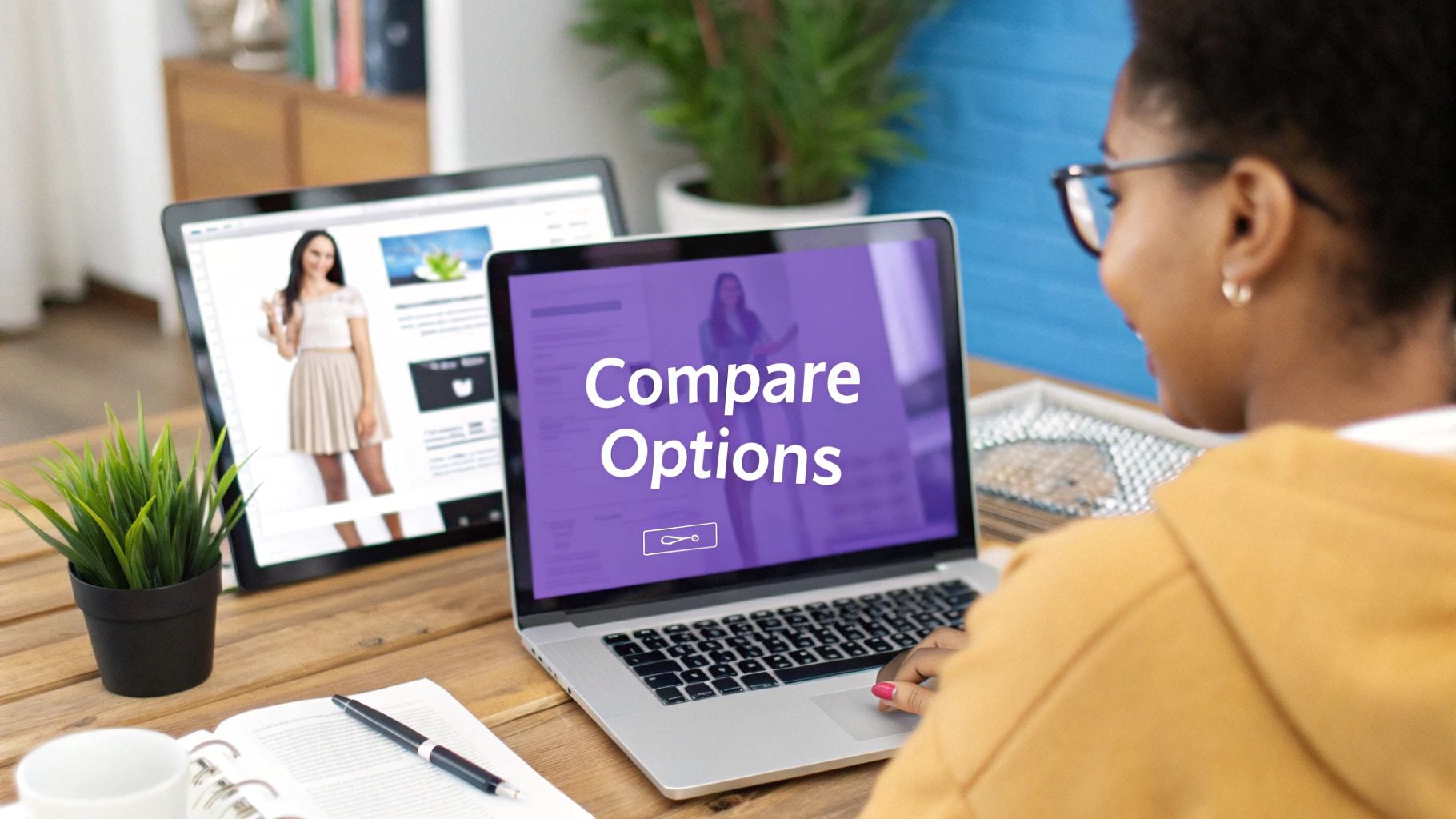 After all the hard work of building awareness and bringing in leads, you’ve arrived at the moment of truth in the customer lifecycle: the Conversion phase. This is where a prospect finally decides to become a paying customer. It's so much more than a simple click on a "Buy Now" button; it represents the successful payoff of all the trust and value you've built up to this point.
After all the hard work of building awareness and bringing in leads, you’ve arrived at the moment of truth in the customer lifecycle: the Conversion phase. This is where a prospect finally decides to become a paying customer. It's so much more than a simple click on a "Buy Now" button; it represents the successful payoff of all the trust and value you've built up to this point.
Success here is all about making the final step easy and inspiring confidence. Think of your checkout process like the final, firm handshake that seals a deal. If it's clunky, confusing, or feels unsafe, the whole thing can fall apart at the last second, regardless of how fantastic your product is. A smooth, secure, and simple experience isn't just nice to have—it's essential.
The psychology driving a purchase is deeply rooted in trust. Your potential customer is about to hand over sensitive financial information and their hard-earned money. They need to feel absolutely certain they’re making a good decision with a company they can count on. This is where social proof becomes your secret weapon.
Some of the most powerful sales pitches don't come from your marketing team; they come from your existing happy customers. Placing genuine testimonials, star ratings, and real-world reviews right on your product and checkout pages can dissolve last-minute doubts and give conversion rates a serious lift.
By showing off that positive feedback, you're essentially validating their choice before they've even finished making it. If you want to dive deeper into guiding people through this crucial stage, learning about optimizing your inbound sales funnel for better conversions is a great next step.
Every single extra step or unnecessary field you add to your checkout form is another chance for a customer to walk away. Simplicity is everything. Your one and only goal should be to make the journey from adding an item to their cart to seeing that "Thank You" screen as quick and painless as possible.
Here are a few small changes that can make a huge difference:
Even with a flawless checkout flow, some people will inevitably get distracted and drop off. But that doesn't mean the opportunity is gone forever. This is where smart tactics like automated cart abandonment emails come in. A friendly reminder sent a few hours later, maybe sweetened with a small discount, can recapture a surprising amount of what would have been lost revenue. After all, this first sale isn't the finish line; it's the official start of a long and valuable relationship.
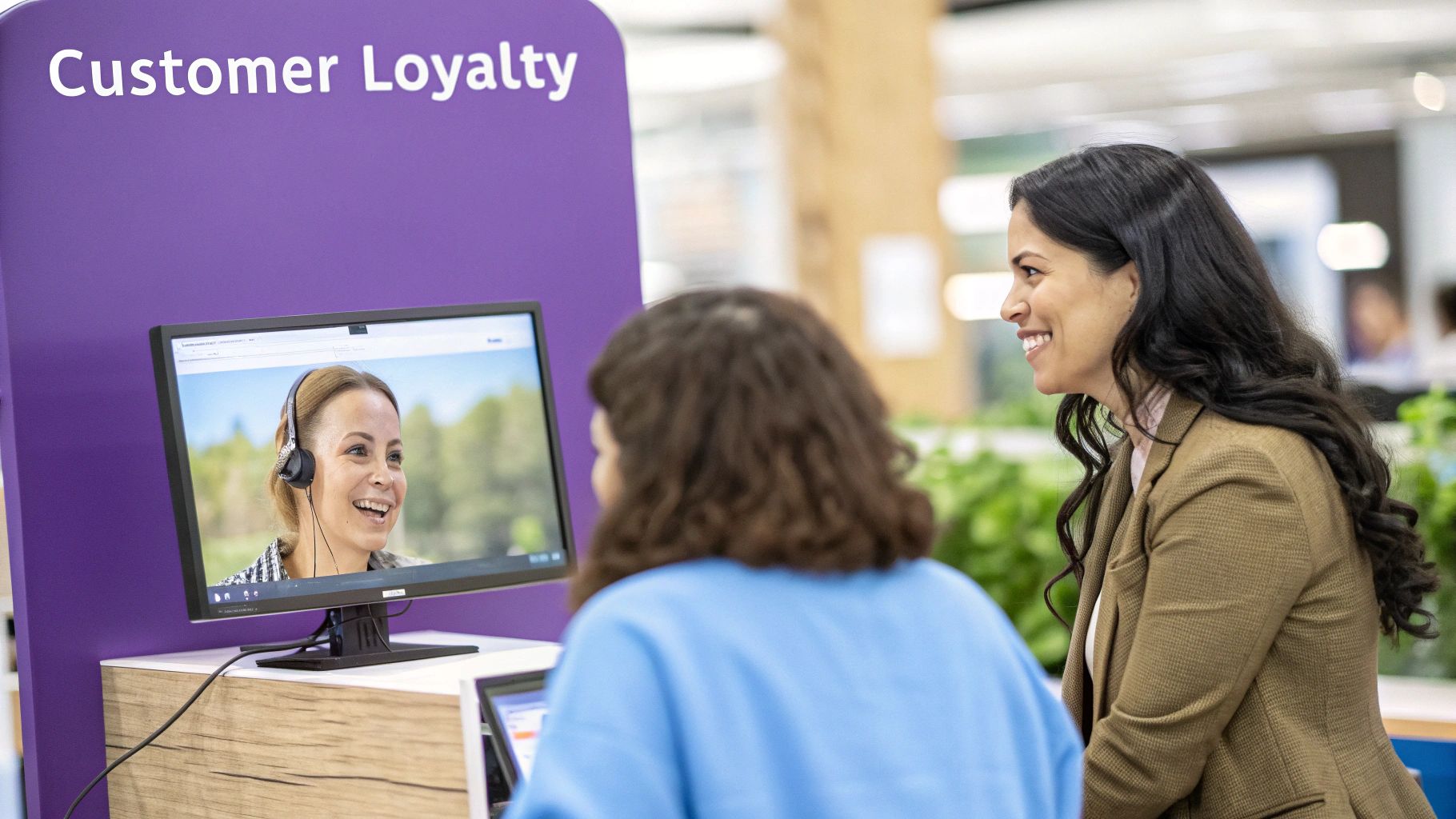
That first sale? It isn't the finish line—it’s the starting block. The real magic, and the most meaningful profits, happen in the phases after a customer clicks "buy." While the Conversion stage gets someone in the door, it's Retention and Loyalty that convince them to stick around, turning a single transaction into a reliable, long-term revenue stream. This is where you build a truly resilient business and create genuine fans.
The Retention phase kicks off the second a purchase is made. The goal is simple but incredibly powerful: make the customer’s experience so good that coming back is a no-brainer. It's all about delivering on your promises and then some. After all, keeping the customers you already have is vastly more cost-effective than constantly chasing new ones.
Great retention doesn’t happen by accident. It's an active, deliberate strategy focused on proving your value long after the initial transaction. You’re not just selling a product; you're ensuring the customer gets everything they can out of it. This proactive mindset builds a sturdy foundation for a lasting relationship and paves the way for that all-important second purchase.
Here are a few proven ways to boost retention:
Once you get the hang of keeping customers happy, you can move them into the final, and most valuable, stage of their lifecycle.
The ultimate goal isn't just to keep customers. It's to transform them into loyal advocates who feel an emotional connection to your brand, turning them into your best marketing asset.
This shift from a purely transactional relationship to an emotional one is how great brands create a powerful, lasting advantage. For a deeper dive into how technology can support this, check out this guide on building an AI retention bot to combat customer churn.
The Loyalty phase is where you reward your very best customers and give them the tools to shout about you from the rooftops. These people aren't just repeat buyers; they are true brand champions who provide authentic social proof, refer new business, and offer priceless feedback. Their word is powerful because it comes from a place of genuine trust.
To cultivate this kind of deep-seated loyalty, you have to make your best customers feel seen and valued.
By strategically focusing on the Retention and Loyalty phases, you create a powerful, self-sustaining engine for growth, fueled entirely by your happiest customers.
Let's be honest: trying to manually guide every single customer through their journey is a monumental task. For a long time, the customer lifecycle was a great theory, but putting it into practice felt overwhelming. That’s where technology, specifically artificial intelligence (AI), has completely changed the game. AI is no longer just a buzzword; it's the practical engine that helps businesses create meaningful, personalized experiences for thousands of customers at once.
Instead of working off guesswork and broad segments, AI platforms like Statisfy dig into vast amounts of data in real time. They can pinpoint which leads have the best chance of converting, figure out what content will click during the acquisition phase, and—critically—warn you when a loyal customer is about to walk away. This flips the script entirely. You move from putting out fires to building stronger relationships from the very beginning.
Think about what it would take for your team to write a unique, perfectly timed message for every person who interacts with your brand. It's simply not possible. But with AI, that level of individual attention is becoming the new normal. It can sift through customer data to create incredibly specific audience groups and then tailor the messaging for each one, making sure the right offer lands at just the right moment.
This data-first approach isn't just a trend; it's rapidly becoming standard practice. The chart below shows just how central AI has become to understanding and engaging customers.
This isn't just about fancy tech. It’s about a direct line between intelligent automation and better business outcomes. AI turns the customer lifecycle from a rough roadmap into a finely tuned, automated engine for growth.
AI isn’t just about doing things faster; it’s about doing them smarter. It gives you the deep understanding and automation you need to ditch one-size-fits-all marketing and start creating genuinely valuable interactions at every stage.
This shift is making waves everywhere. By 2025, an estimated 80% of companies worldwide had already brought AI into their workflows to better personalize engagement and predict customer behavior. For example, during the retention phase, predictive analytics can flag at-risk customers long before they leave, giving you a chance to step in with a special offer or extra support. It's no surprise that brands using AI are seeing major lifts in customer lifetime value (CLV), many in the double digits. You can dig deeper into how AI is revolutionizing lifecycle marketing.
So what does this look like in the real world? Here’s a quick breakdown of how AI plugs into different stages:
By weaving AI into each of these phases, you can build a customer journey that is smarter, more connected, and, in the end, far more profitable.
Even with a solid map of the customer lifecycle, a few common questions always seem to pop up when you start applying these ideas to your own business. Let's tackle them head-on, so you can move forward with confidence.
This is the big one, but it’s a bit like asking a mechanic for the most important part of an engine. The truth is, they all work together. A weakness in one stage will eventually cause problems everywhere else.
That said, if you forced me to pick the one with the biggest bang for your buck, I’d point to Retention. The data is pretty clear: keeping an existing customer is anywhere from 5 to 25 times cheaper than finding a new one. Happy, repeat customers also spend more over time and become your best salespeople, driving that all-important word-of-mouth.
But don't get tunnel vision. A truly healthy business keeps an eye on every stage, making sure the entire journey from stranger to advocate is as smooth as possible.
Lifecycle marketing can sound intimidating, but you don't need a huge budget or a dozen different software tools to get started. The secret is to start small and build on what you already know.
Begin by sketching out your current customer journey. Just ask yourself some basic questions to pinpoint the touchpoints for each phase:
For a small business, the most practical approach is to pick one or two stages and focus on making a tangible improvement. Maybe you start by setting up a simple automated welcome email for new customers (Retention) or begin actively asking for reviews after a sale (Loyalty).
You can use simple tools—even a basic CRM or a well-organized spreadsheet—to track these interactions. As you start seeing what works, you can gradually layer in more advanced tactics.
You can't improve what you don't measure. Keeping score is essential for knowing where you’re winning and where you need to adjust your game plan. While the specifics can vary, here are the core metrics you’ll want to watch for each stage:
Think of these numbers as the dashboard for your business. They’ll tell you exactly where to focus your energy for the greatest impact.
There’s really no such thing as a "typical" length. It all comes down to your industry and what you sell.
For a software-as-a-service (SaaS) company, the lifecycle is a continuous, monthly loop. For a car dealership, that cycle could be years long. For an online clothing store, it might just be a few weeks or months between purchases.
The goal isn't to fit into some generic timeline. It's to understand your average cycle and then do everything you can to extend the profitable Retention and Loyalty phases. That’s how you build lasting relationships that fuel real, sustainable growth.
Ready to turn your customer data into smarter, revenue-driving actions? Statisfy uses AI to automatically monitor customer health, generate actionable recommendations, and help your team build stronger relationships at every single stage. See how you can reduce churn and boost efficiency.